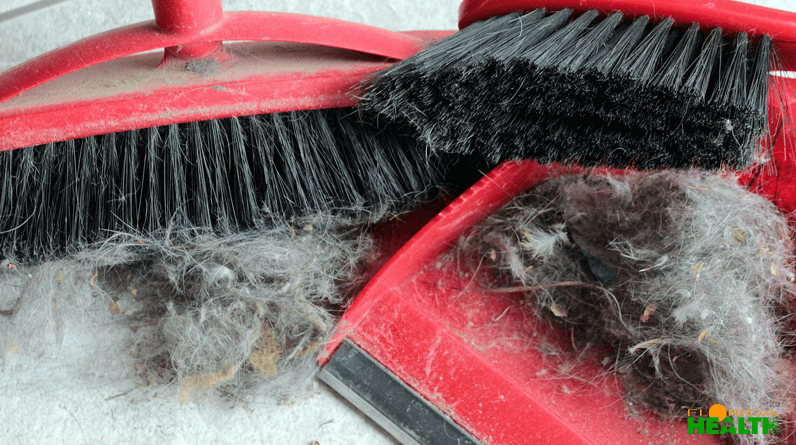
Symptoms of hay fever and other allergies often include itching, sneezing, painful and stinging, or irritated eyes. There are many allergy medications available nowadays and they should be taken every morning for proper functioning. But there are natural resources and remedies available for these complaints as well. In this way, you can reduce or prevent allergic symptoms in a healthy and safe way.
Allergy And Medications
Before you start taking medication to get rid of your allergy, it might be a good idea to see what you can do yourself or what nature can do for you. There are a lot of things you can do first to reduce your symptoms. And we already know from many kinds of plants and herbs that they have healing properties, but what helps against allergies?
If you are allergic, histamine is released into your body if it has come into contact with a substance you are allergic to. The regular medication contains antihistamines, this substance suppresses allergic reactions and blocks the action of histamine. But in nature, you can also find natural antihistamines.
Natural Antihistamines (Allergy Blockers)
- Nettles: stinging nettles contain a substance that acts as a natural allergy blocker. The leaves of the stinging nettles are freeze-dried and available in capsules from the nature store. Take 500 mg. every day for a good effect. Or drink nettle tea to control hay fever.
- Gingko biloba: another good allergy blocker is ginkgo biloba. This Japanese nut tree is known for its positive effect on memory, but it is also a good allergy fighter. These leaves contain ginkgolides and these inhibit the activity of the substance that provokes allergy. They have a good effect on blood circulation and ensure clean blood vessels.
- Quercetin: this is a natural dye and is commonly found in the plant kingdom and is therefore also present in our diet. It is common in a number of foods consumed, such as red wine, apples, onions, green tea, and also in blue grapes, but it is also used as a food supplement. Quercetin inhibits the release of histamine. You can obtain capsules at the natural store, take a capsule of 500 grams twice a day. Attention! Do not take this if you are already taking nettle capsules, because it already contains quercetin.
Start With Omega-3 Fatty Acids
Fish contain omega-3 fatty acids. These counteract inflammatory reactions in the body as well as those caused by allergies. Good fish with these fats are salmon, sardines, fresh tuna and mackerel. You can also obtain capsules with these omega-3 fatty acids in them, but choose a capsule that provides 1000 mg EPA/DHA per day.
Omega-3 fatty acids are also found in linseed oil or flaxseed oil. You can add the oil to a salad dressing or a glass of juice. Take 1 tablespoon a day.
Go For Simple Softening Agents
Red and itchy eyes can be softened by applying a cold, damp washcloth to the eyes. You can do this indefinitely, so whenever and however often you want. You can also use a nasal spray with a saline solution. These have been used for a very long time to remove nasal mucus and keep the nasal tract moist. Dissolve half a teaspoon of salt in 250 ml. of warm water. Fill a syringe and spray it gently into the nostrils. Keep a towel handy.
Protection Against Hay Fever Symptoms
There are a number of remedies that are simple, but which are often not thought about, or which we forget. But there are a number of things that are easy to apply to relieve hay fever complaints.
Staying Inside
Most patients who suffer from hay fever do know when to stay indoors or avoid walking in nature. Nowadays there are pollen calendars, on which you can see which plant or tree flowers are the strongest. But also pay attention in case of thunderstorms. Before a thunderstorm, the humidity is high, causing pollen grains to swell and burst open.
In this way, they spread their irritating content, which can cause a hay fever attack. So stay indoors before the thunderstorm, and for a few hours afterward as well.
You can also use a dust mask. You may not look hip with a dust mask on, but if you really can’t help it and you know that you will come into contact with pollen, then wearing a dust mask is a nice way to protect yourself. Dust masks are available in every DIY store.
Closing Windows and Doors
Keep windows and doors closed during a high concentration of airborne pollen. The same applies while driving. If you have air conditioning in the car, put it on inside circulation so that the pollen cannot get into the car after all.
Wash your hair before going to bed. Dust and pollen can get into your hair and you transfer them to your pillow unnoticed.
Tackle Dust Mites
Dust mites are nasty creatures that cannot be seen with the naked eye and whose feces can cause allergic symptoms. They occur in curtains, carpets, and beds. First of all, make sure that the house dust mites have little or no chance of survival. Go for laminate or tarpaulin instead of carpet, choose blinds or slats instead of curtains, and make sure you have special anti-dust mite covers for your mattress, duvet, and pillow.
There are even special hypoallergenic mattresses for sale, so you can significantly reduce the risk of house dust mites. Vacuum your house at least twice a week and change your sheets every week and wash them at a minimum of sixty degrees to kill the mites.
Keep your house clean and avoid clutter and dust, this is where house dust mites are often found.
By getting a dehumidifier in the house, you keep the air in the house dry. House dust mites die when the humidity level is lower than 45 percent.
Allergic Complaints Caused By Animals
Don’t let your pet into your bedroom. Animal fur, dead skin cells, dried saliva and flakes from the coat can cause allergic symptoms. These allergens remain in the room, even when the animal is gone. If you are allergic to your pet e.g. your dog, consider letting the dog sleep outside in a kennel.
Even if it is uncomfortable, it is still the best way to keep the animal allergens outdoors as much as possible. You can also arrange something for cats outside your house, e.g. in the barn, or a cat house in your garden. And keep your pet clean by giving him a bath or shower once a week. Use only water or an appropriate shampoo to remove most skin flakes..
Keep The Air Clean
There are many air cleaners nowadays with HEPA filters that block the allergens, which are dispersed through the air and in this way can alleviate the allergy to fungi, pollen, and pet dander.
Thorough cleaning of the house is also very important and in addition to the weekly care of your home, it is also advisable to have a major cleaning at least twice a year, once in spring and once in autumn. If necessary you can clean surfaces with slightly diluted bleach, also think about the inside of the cupboards.
This greatly reduces the amount of dust, mold, dander, and other allergens. Don’t forget the cellars, this is a breeding ground for fungi because of the often high humidity. Place a dehumidifier or moisture trap in the cellar and empty the reservoir regularly.
Homeopathic Remedies
There are homeopathic remedies available that can give relief in case of an acute allergic attack, both for internal and external use. Luffanil tablets are available to help with hay fever and house dust allergy. In case of allergic rash or symptoms of eczema, you can use an ointment, cream, or emulsion of Cardiflor. Optilan eye drops to nourish and soothe red and irritated eyes.

Carl Riedel is an esteemed online researcher and writer, specializing in the intersection of technology and wellness. As a member of the International Association of Therapists, Carl brings a unique perspective to his work, skillfully integrating insights from therapy and digital trends. His articles help readers navigate the complexities of the digital age with an emphasis on promoting mental and emotional well-being.


